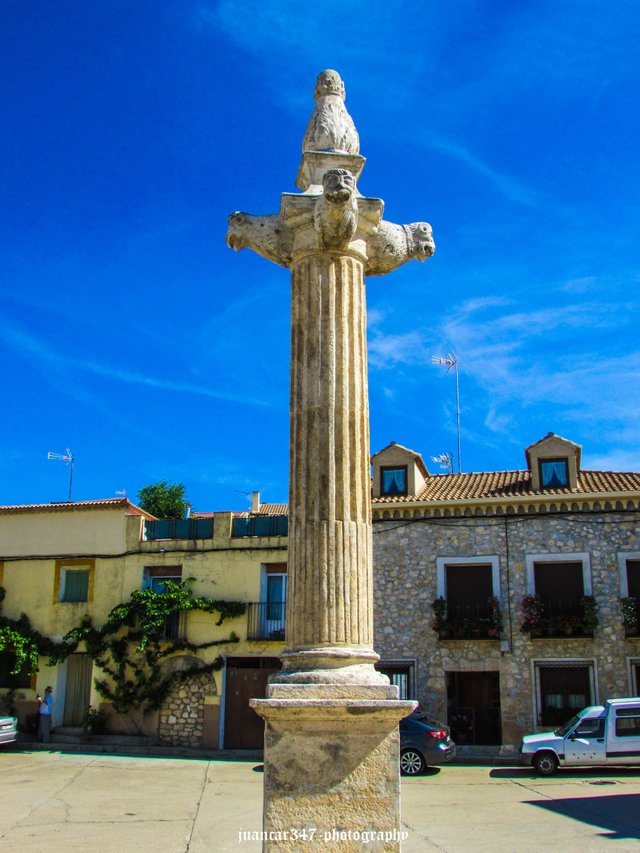
It's impossible not to remember that other gentleman, Don Guido, the same "thunder dressed as a Nazarene" alluded to in one of his poems by Antonio Machado, and to remember that other emeritus modern man, with a prominent stomach, better food, and a Quevedo-esque verb, Camilo José Cela, when one, for whatever reason, travels to any place in that place everyone talks about, but no one visits: La Alcarria.
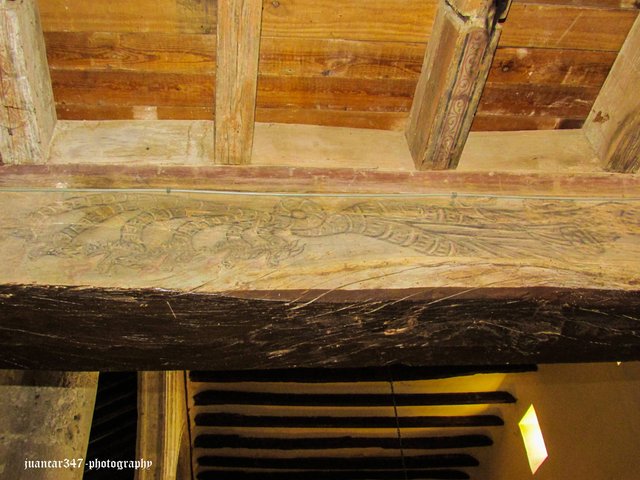
La Alcarria, aside from its honey and its astonishing lavender fields, which every season end up in the hands of French perfumers, is a land that hides many secrets in the most unexpected corners of its rugged geography, many of which, fortunately, went unnoticed by the watchful eye of American Big Brother, who, believe it or not, brought some 12th-century Romanesque monastery to the happy United States of America.
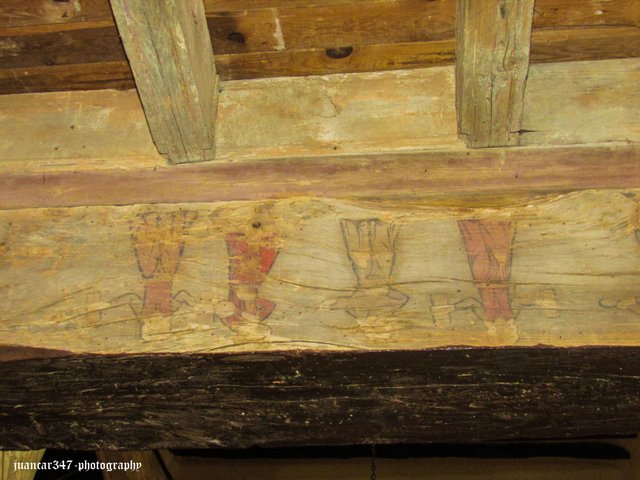
It often happens that in those towns that are generally left behind with barely a compassionate glance, some mystery from the past is hidden in the chiaroscuro interiors of their mysterious churches, inviting speculation. This is the case with this part of the old coffered ceiling of a Romanesque church, which graphically depicts medieval man's irrational fear of an apocalyptic beast, the seven-headed hydra, although, mysteriously, it is placed upside down.
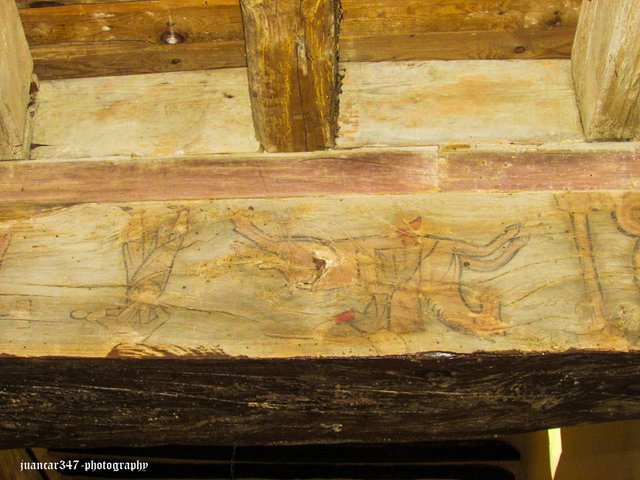
Es imposible no recordar a ese otro caballero Don Guido, el mismo ‘trueno vestido de Nazareno’ al que aludía en uno de sus poemas Antonio Machado y no acordarse de ese otro emérito moderno, de prominente estómago, mejor yantar y un verbo quevediano que fue Camilo José Cela, cuando uno, por las circunstancias que sean, se desplaza hacia cualquier lugar de ese sitio del que todos hablan, pero que nadie visita: la Alcarria.
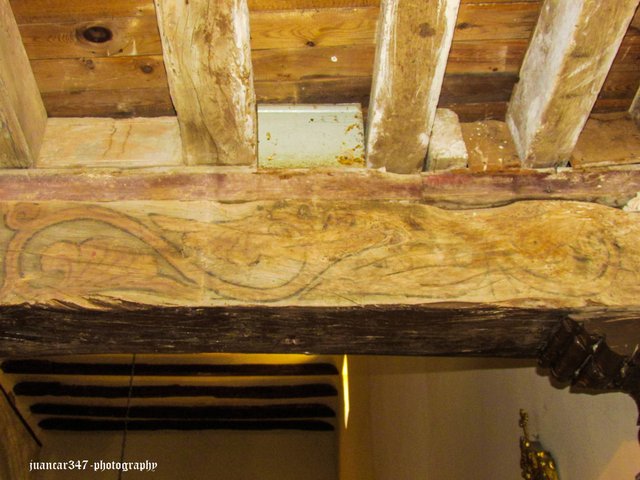
La Alcarria, dejando aparte su miel y sus asombrosos campos de lavanda que todas las estaciones terminan en manos de perfumistas franceses, es una tierra que esconde muchos secretos en los rincones más imprevistos de su quebrada geografía, muchos de los cuales, por fortuna, pasaron desapercibidos al ojo avizor del Gran Hermano americano, que, lo crean o no, se llevó algún monasterio románico del siglo XII a los felices United States of America.
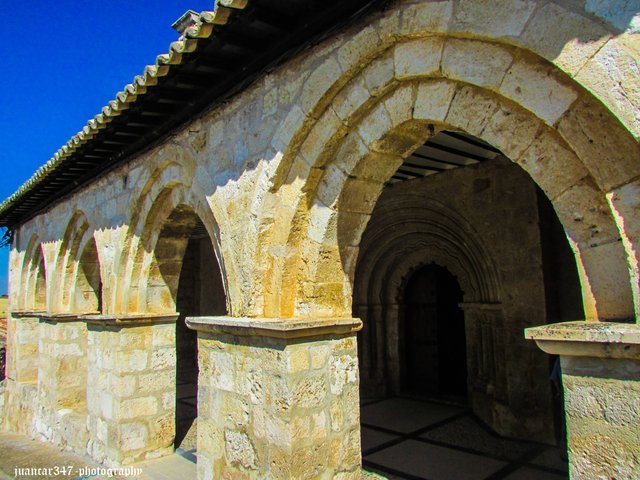
Suele ocurrir, que, en esos pueblos que generalmente se van dejando atrás sin apenas dedicarles una conmiserativa mirada, se oculte, en los claroscuros interiores de sus arcanas iglesias, algún misterio del pasado que invite a la especulación, como esta parte del viejo artesonado de una iglesia románica, que muestra gráficamente ese pavor irracional del hombre medieval hacia una bestia apocalíptica, la hidra de siete cabezas, aunque, misteriosamente, colocado al revés.
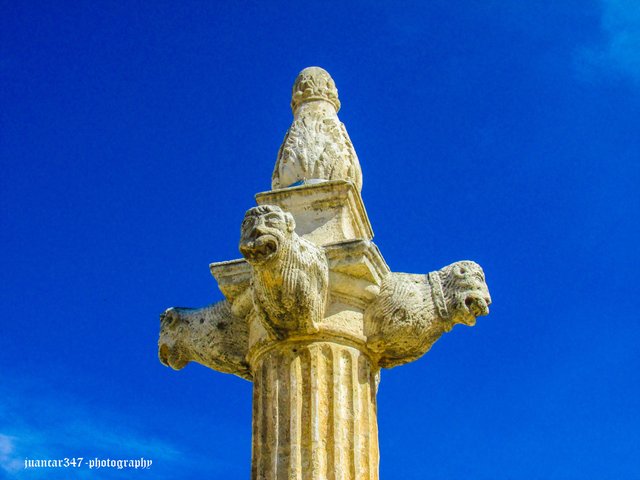
NOTICE: Both the text and the accompanying photographs are my exclusive intellectual property and are therefore subject to my copyright.
AVISO: Tanto el texto, como las fotografías que lo acompañan, son de mi exclusiva propiedad intelectual y por lo tanto, están sujetos a mis Derechos de Autor.
